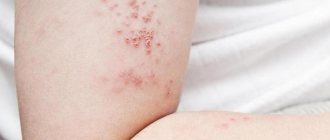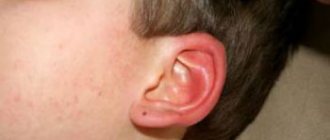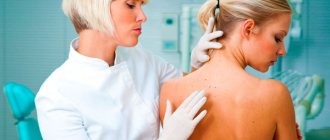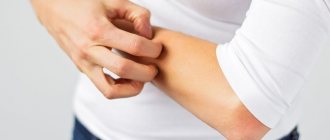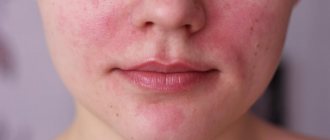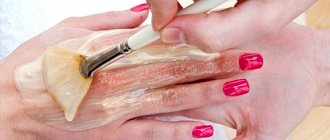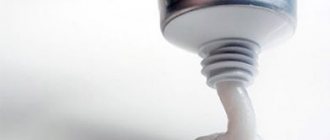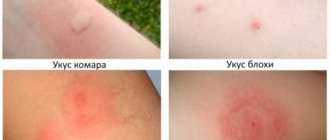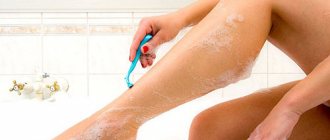What causes itchy nipples?
There are several reasons for itchy nipples. Their list includes the following body conditions.
Pregnancy
Pregnancy can cause itchy nipples
Hormonal changes, breast enlargement and increased blood flow to the mammary glands can cause a woman to experience itchy nipples during pregnancy. The expectant mother may also experience nipple tingling, sensitivity, soreness and heaviness in the breasts.
In most cases, a woman can get rid of itchy nipples with self-medication, which includes:
- The use of natural lotions containing vitamin E, cocoa butter and lanolin. Additional use of petroleum jelly can also help maintain skin moisture throughout the day. It is recommended to apply lotions and Vaseline to the nipples after taking a shower, preferably in the morning or in the evening.
- Use mild, fragrance-free detergents. They usually help prevent harsh chemicals from coming into contact with your skin.
- Wearing appropriate bras. Maternity bras that are not too tight and allow air flow to the breasts can help reduce itchy nipples.
Dermatitis
There are several causes for nipple or areola dermatitis. This includes eczema, contact or allergic dermatitis. Certain types of dermatitis can also cause eczema.
Eczema is a common disease for nursing mothers, especially in cases where women have previously experienced atopic dermatitis.
Eczema is a skin condition that can affect any part of the body, including the breasts.
Some types of eczema can be caused by irritation caused by friction from running, wearing rough clothing, or using water, soaps, and certain detergents.
Certain types of eczema are the result of allergic reactions when the skin comes into contact with unrefined lanolin, chamomile ointment and perfume.
The list of symptoms of areola or nipple eczema includes:
- itching, burning and pain of the nipples;
- pimples;
- damage to the skin that oozes fluid;
- the appearance of a crust on the skin and the appearance of spots.
Treatment for nipple and areola eczema includes:
- identification and elimination of factors that aggravate the disease;
- refusal to comb the affected areas, as this can aggravate the condition and lead to infections;
- control over the water balance of the skin using moisturizers;
- the use of steroids and other medications that are recommended by the attending physician and sold according to his prescription;
- use of antihistamines such as hydroxyzine.
Treatment with antibiotics may be necessary in cases where the infection spreads. Women should take medications as directed by their doctor.
Yeast infections
Sometimes women may experience yeast infections on their breasts called thrush. They are usually the result of a fungus called Candida albicans. However, thrush can develop for unknown reasons. It can appear during breastfeeding, in women with vaginal thrush or during the use of antibiotics.
When your skin itches
Hepatic itching can occur with various diseases. But all of them are considered serious, and if left untreated can lead to serious consequences.
There are three mechanisms for the occurrence of skin itching in liver pathologies.
Destruction of hepatocytes
When liver cells are damaged, the process of releasing bile acids into the blood is stimulated. Passing through small vessels of the skin, they cause a burning sensation, which is subjectively perceived as itching.
In particularly sensitive areas, a characteristic rash appears, gradually spreading throughout the body.
This mechanism is typical for several types of pathologies:
- infectious diseases (helminthic infestations, protozoa infections, viral hepatitis);
- cirrhosis (including biliary);
- intoxication (chemicals, drugs, alcohol, poisons).
The duration of itching varies: from several months to two years. This depends on the type of lesion and the rate of progression of the disease.
It is important to know!
Patients with such pathologies are characterized by a saffron skin color due to the increased concentration of free and conjugated bilirubin in the blood. This type of jaundice is called hepatic jaundice.
Stagnation of bile
This phenomenon is observed when the bile duct is blocked by a stone or is compressed from the outside by a tumor. Subhepatic jaundice occurs.
With cholestasis, bound bilirubin is not removed from the bile flow, so it is absorbed into the blood. Laboratory tests reveal its increased content. Visually, this is noticeable by the olive color of the skin.
Due to bile retention, acids enter the bloodstream. This causes severe itching and burning. With subhepatic jaundice, skin manifestations occur in half of all cases.
In addition to skin manifestations, the patient is worried about discomfort in the area of the liver projection, fever, vomiting and nausea, and general weakness.
Taking medications
Some drugs can cause problems with the liver and gallbladder. While taking them, symptoms of cholestasis are noted. These medications include:
- antibiotics (tolubutamide, phenothiazine, erythromycin);
- hormonal drugs (combined oral contraceptives, anabolic steroids, sex hormone substitutes).
If you experience discomfort during treatment with these medications, you should consult with your doctor about replacing the drug with a similar one.
Could itchy nipples be a sign of serious illness?
Sometimes itchy nipples can indicate the development of cancer
Paget's disease is a type of cancer that affects the top layer of skin called the epidermis. However, other types of tumors may be present in the affected breast. Although Pedjedt's disease is more common in women, it can also occur in men.
People who suffer from Paget's disease, in addition to itchy nipples, may have the following symptoms:
- tingling around the areola, redness, flaking or crusting of the skin;
- rough skin on the nipple and areola;
- flat nipple;
- yellowish bloody discharge from the nipples.
Depending on the degree of development of the disease, other symptoms may appear. People diagnosed with Paget's disease may require surgery to remove the nipple, areola, or entire breast.
Lymph nodes may also be removed to see if the cancer has spread. Treatment for Paget's disease may also include chemotherapy or certain types of hormone therapy.
Types of itching
But why does a person start to itch? So he massages the itchy area - that is, the place where the pathology arose. After this, blood supply to this area increases, lymph flow accelerates and the toxic component is removed, after which the desire to scratch this area gradually subsides.
In some cases, the skin begins to itch due to the accumulation of certain metabolic products in the body, which is a physiological reaction and stops on its own.
Doctors divide itching into the following 2 types:
- Localized or universal - for example, itching in the perineal area during pregnancy or itching in the anus with some types of helminthiases;
- Widespread (felt throughout the body) - for example, itching in liver disease.
Due to helminth infections, itching may appear in the anus or perineum.
Each of these varieties, in turn, can present as itching:
- Constantly felt;
- Occurs periodically.
According to the intensity of the unpleasant sensations, itching is of a different nature and varies from insignificant to extremely severe. With the latter, the patient loses his appetite, his sleep is disturbed, he scratches the affected areas until there are bloody crusts.
It has been confirmed that skin itching occurs more often and is felt more intensely before bedtime, in the evening and at night. It is quite simple to explain: in the evening the blood vessels dilate. The temperature of the skin also increases due to being under the blanket, and this in turn causes increased blood circulation and general sensitivity of the body.
Note! In the evening hours, a person is left alone with his itch, coming into the room from work or from the street, where there were many distractions. This is how an additional psychological factor is triggered, and you get the feeling that the itching has become stronger, even if this is not the case.
When is it necessary to consult a doctor?
If a girl experiences itching and it turns out that this is not an allergic reaction, she will consult a doctor.
You need to go to the doctor if your nipples:
- The skin has become different shades or one breast is larger than the other.
- They are not located symmetrically. Seals can be felt.
- The woman's health is deteriorating.
- They became different shapes and discharge appeared.
Conclusion
If signs appear, you should quickly consult a doctor. If a woman does not delay her visit to the mammologist, then there is a chance of preventing it from getting worse and being completely cured.
It is strictly not recommended to self-medicate and prescribe medications on your own. The diagnosis is made by an experienced doctor, who will also select the appropriate treatment.
When to see a doctor if you have itchy nipples
If a woman’s nipples itch, and she excludes the allergic nature of this phenomenon, and the itching does not go away after she stops wearing synthetic underwear, you need to pay special attention to the presence of the following signs of pathology:
In these cases, you should immediately consult a doctor. The sooner a woman undergoes a mammological examination, the greater her chances of avoiding serious complications and keeping her breasts in excellent condition. In any case, if your nipples are itchy, you should not self-medicate, drink medications uncontrollably, or use ointments without a doctor’s prescription. Treatment depends on the diagnosis, which can only be made by an experienced specialist.
At one point in life, itchy nipples occur in most women and men. This condition can be caused by various factors, but most of them are not a serious cause for concern.
However, some symptoms should not be ignored, since sometimes itchy nipples may indicate that dangerous processes are occurring in the body.
In this material, we will discuss the most common causes of itchy nipples, talk about treatment and prevention of this condition, and also determine when to see a doctor about this problem.
Fast Facts About Itchy Nipples
- Most causes of itchy nipples are not related to serious illnesses such as cancer.
- Treatment for itchy nipples is usually done at home or with over-the-counter medications.
- Itchy nipples may indicate a rare but very dangerous type of cancer - Paget's disease of the breast.
What to do if your nipple itches: treat or try to prevent?
Of course, a disease is easier to prevent than to treat. It is worth following a few useful and fairly simple tips so that you no longer have to deal with itchy nipples and their causes.
- It is advisable to wear underwear and underwear only made from natural fabrics.
- Use hypoallergenic cleaning products for washing.
- Before taking any drug, read the instructions first.
- Personal hygiene cosmetics for the body should be free of fragrances and dyes.
- During an exacerbation, avoid tanning in direct sunlight.
- Try not to scratch the halos to avoid the formation of cracks and scratches. They can provoke an inflammatory process.
- Use moisturizing and nourishing creams and oils, especially if you have dry skin.
But first of all, what you should do if your nipple itches is not to self-medicate, but to consult a specialist.
Perhaps each of us faces the question of why the nipple itches from time to time. Indeed, itching and discomfort in the area of the areolas of the mammary glands is a common phenomenon, which is not always a harmless process, as it can indicate the development of serious disorders in the human body and can even be one of the first symptoms of cancer. Therefore, you should not ignore itching sensations in the nipple area, especially if they occur frequently or become permanent. It is better to immediately consult a mammologist, since such discomfort can be caused by a variety of factors.
Causes of the rash
A rash on the sternum in women, the causes of which can be different, can be the result of pathologies or ordinary physiological factors.
Infectious diseases
Scarlet fever, measles and chickenpox can cause rashes in the sternum area. Usually the rash appears not only in the chest area, but also on the face, stomach and back. If acne forms on the sternum, you should immediately visit a specialist.
In some cases, such a symptom indicates the development of a serious illness. The rashes can be large or small and often become damaged and crusty.
Skin diseases
Contact of the skin with various substances quite often leads to the appearance of a rash. However, in some cases, the patient develops rashes in the form of flat spots with jagged edges.
The cause of a rash on the chest in women can be dermatitis of various origins. Photos with examples and descriptions
This sign indicates the development of eczema, psoriasis or severe dermatitis. It is worth noting that with such pathologies, the rash spreads over a large area of the skin.
Emotional stress
Stressful situations, constant anxiety, as well as psycho-emotional stress are considered common causes of rashes. Usually the rashes are small in size, located close to each other, and affect small areas of the skin.
The rash appears first in the sternum area, after which it can spread to the stomach, arms and face.
Pathologies of internal organs
Damage to the intestines, stomach and liver can cause rashes in the sternum area. The female body reacts sharply to such disorders, so female patients develop a rash much more often than male patients.
In addition, diseases of the reproductive system, for example, damage to the ovaries, become a predisposing factor to the formation of a rash. Usually it is localized in a specific area, namely in the sternum area.

